Sign up for The Wild
We’ll help you find the best places to hike, bike and run, as well as the perfect silent spots for meditation and yoga.
You may occasionally receive promotional content from the Los Angeles Times.
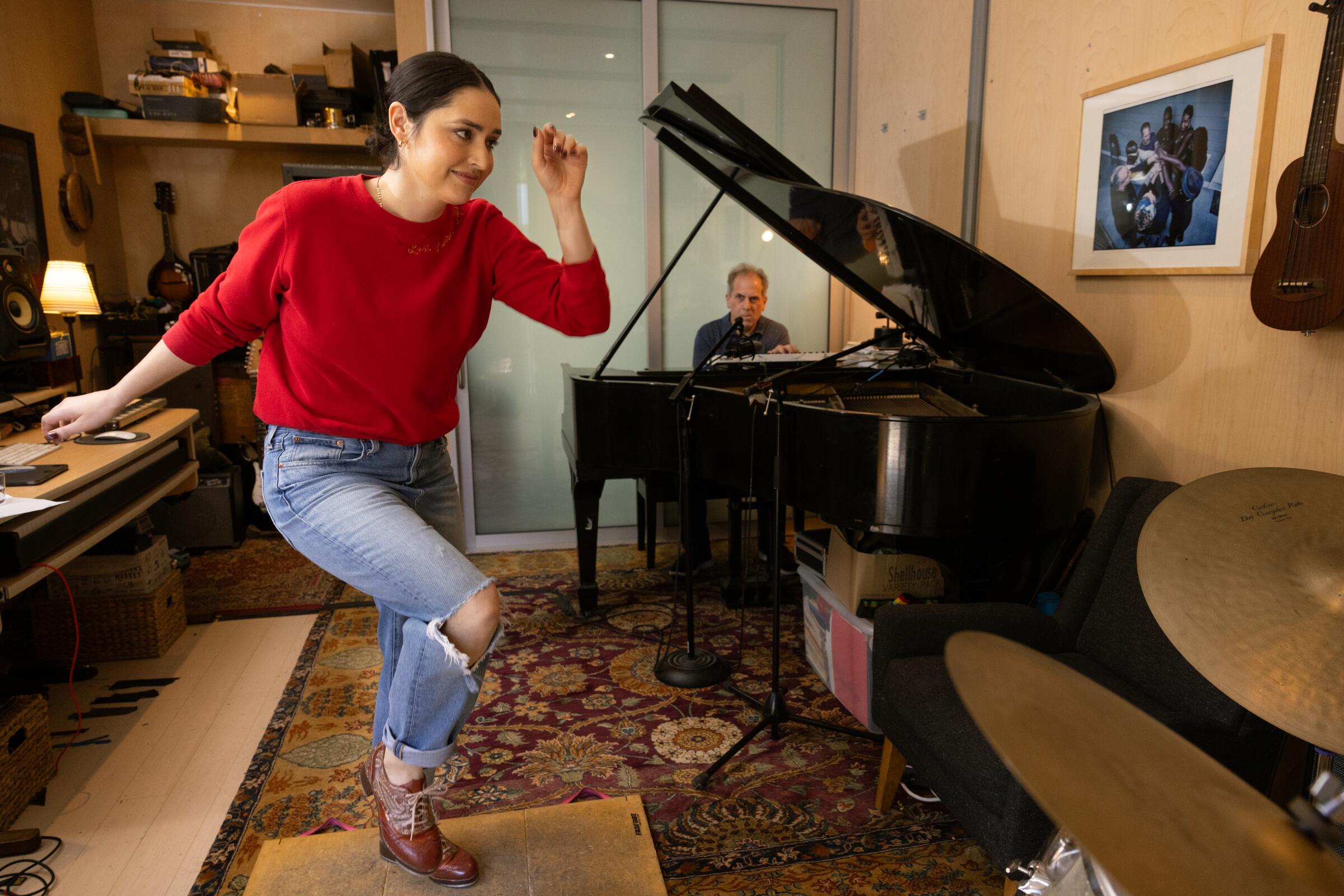
In a quiet backyard nestled in the Sherman Oaks hills, seasoned jazz musician Larry Goldings begins to play the punchy opening notes to Van Halen’s “Jump” on his prized melodica. Standing beside him is dancer Melinda Sullivan, who soon strikes the glam metal of her tap shoes on a 27-by-35-inch piece of wood, providing a steady, playful metronome alongside the melodica.
L.A. is full of talented jazz musicians and tap dance artists. Yet to find good live jazz in Los Angeles, one must make a plan: It involves forward-thinking and includes purchasing tickets, accounting for commute time, and (if you’re lucky) finding parking. The city doesn’t exactly have many jazz clubs these days, either. The loss of the longtime stalwarts like downtown’s Blue Whale, which closed during the pandemic, certainly don’t help matters.
What Goldings and Sullivan have been building for the last two years within L.A.’s splintered jazz scene is special, though. With Goldings playing the piano and Sullivan providing rhythmic beats through her tap shoes, the two improvise music together and bust out smooth, soulful renditions of musical theater classics, like “Somewhere” from “West Side Story.” Drawing from the worlds of jazz music, funk, commercial dance and underground tap, their eclectic collaboration has amassed them a dedicated fan club over Instagram and Patreon, who seek out their improvised magic in clubs all over Southern California.
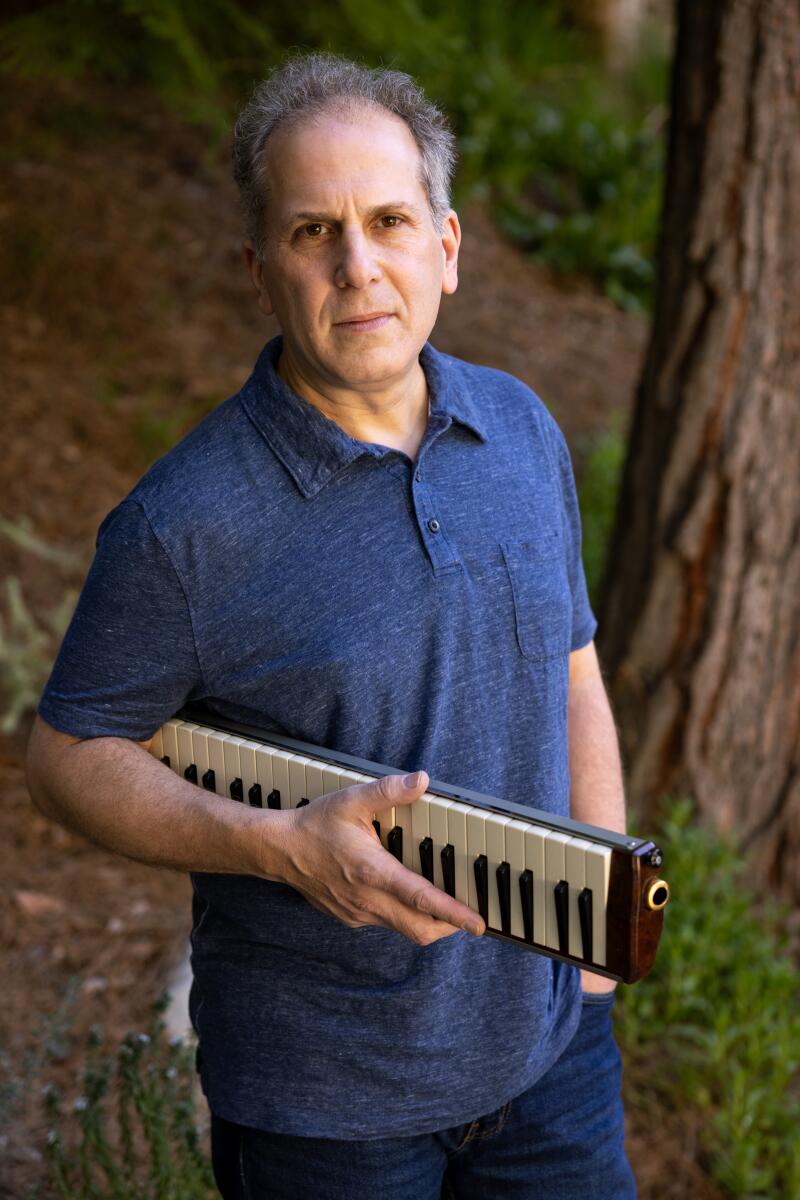
Jazz pianist Larry Goldings stands for a portrait at his home. (Brian van der Brug / Los Angeles Times)
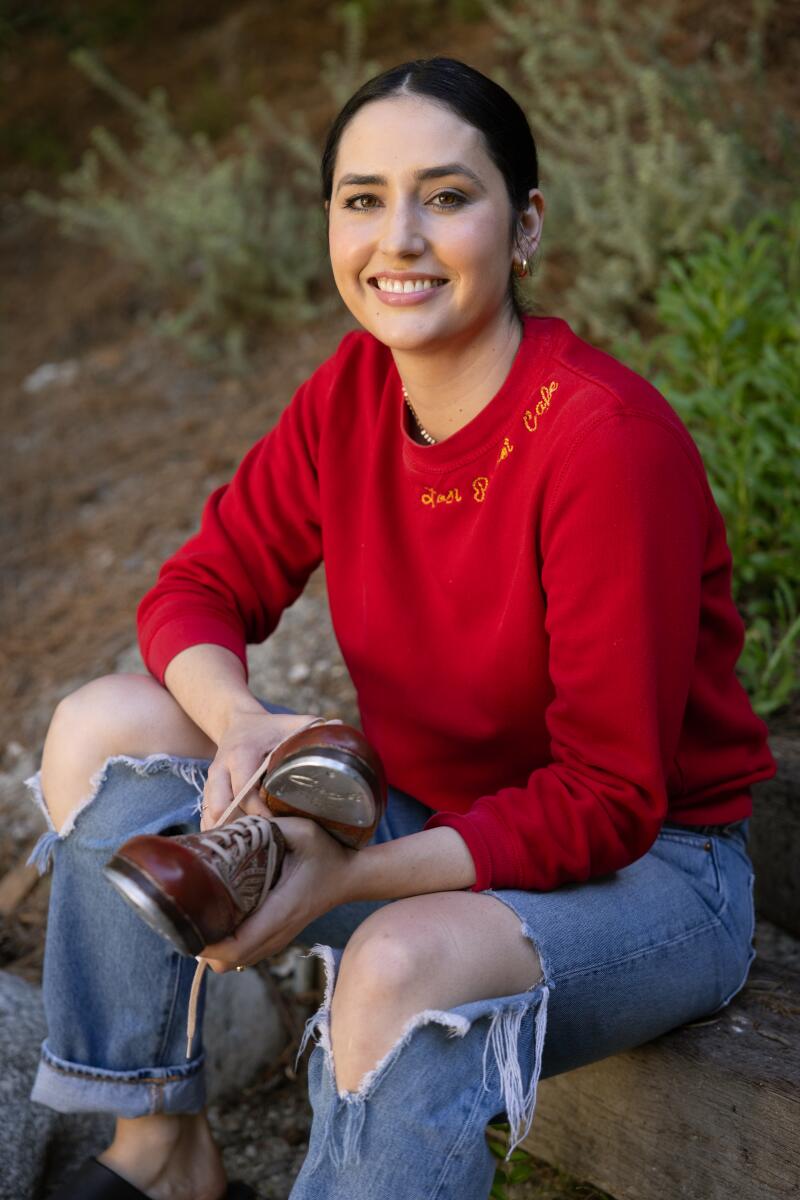
Tap dancer Melinda Sullivan sits for a portrait at Larry Goldings’ home. (Brian van der Brug / Los Angeles Times)
Canadian musician and composer David Foster is a Sullivan and Goldings super fan. In all his years as a musician, he tells The Times he’s never seen anything quite like their collaboration. “I was literally blown away” watching them perform, he says, “If you get a chance to see Melinda and Larry, RUN don’t walk — it is breathtaking, refreshing, totally unique and will leave you screaming to see and hear more!!”
During the pandemic, the two started bringing their spontaneous, improvised material to their social media pages. This allowed the two artists to combine forces, quickly garnering new followers and hundreds of thousands of views on Instagram and Youtube. Some videos have sparked conversation among jazz musicians, tap dancers and more mainstream music enthusiasts, with the likes of Sheila E., Robert Glasper, and Questlove chiming in. Then, as venues reopened in 2022, they began bringing their colorful renditions of “Matchmaker,” “Seven Steps to Heaven,” and “Surrey With the Fringe on Top” to clubs like the Stowaway and Sam First.
Minaret Records, a record label founded in 2019 by Yousef Hilmy, aims to be a beacon of the local Los Angeles jazz community.
Before meeting and collaborating, Goldings and Sullivan had both pursued successful solo careers in their own right.
Born in Boston and influenced by such varied artists as Billy Joel and Oscar Peterson, Goldings has always been fascinated by harmony. A two-time Grammy nominee, he studied the form privately with jazz legends Ran Blake and Keith Jarrett before moving to New York to attend the jazz program at the New School in 1986. While in school he toured with Jon Hendricks and then worked mainly as an organist, as many jazz clubs were not equipped with pianos at this time.
His gig as a side man with Maceo Parker (best known for his work with James Brown) gave him global recognition and sealed his reputation as an organ player. Since then, he has continued to play with his own group while working with artists including Herbie Hancock, James Taylor, Sia, John Mayer, and John Legend.
Raised in Thousand Oaks, Sullivan started dancing at age 4. After high school she was cast as a swing in the “Cats” 25th Anniversary Tour and as ensemble in the inaugural tour of “High School Musical on Stage.” In 2010 she finished in ninth place on “So You Think You Can Dance,” the furthest any tap dancer had gone on the show to date. She fine-tuned her improvisational skills while working with Jason Samuels Smith in his A.C.G.I. troupe and made her big choreography debut in 2012 with her work “Gone,” which won Dance Teacher magazine’s Capezio A.C.E. Award and a budget to produce a large-scale version of it in New York. Since then, she has worked on Hollywood films, including “La La Land” and playing Ann Miller in “Being the Ricardos,” while teaching at the Colburn School downtown.
The two met in 2019 through Inara George, daughter of Lowell George, founding member of the band Little Feat, when they were workshopping a musical they were writing on Margaret Sanger and her lifelong dedication to birth control. George had invited Sullivan in as a guest artist, and Goldings was introduced to the tap prodigy. In awe of Sullivan’s artistry, Goldings agreed to record a short retirement video for Sullivan’s father-in-law, who happened to be a huge fan of his.
But it was during this first jam session that they realized how well they complement one another and discovered their shared love of wide-ranging musical taste, especially musical theater. They had so much fun recording this first video of “Somewhere” for the virtual retirement gala that they decided to do it again, and again. It then became a pandemic hobby for them: meeting up in Goldings’ small studio or backyard, jamming, and recording their evolving artistic collaboration.
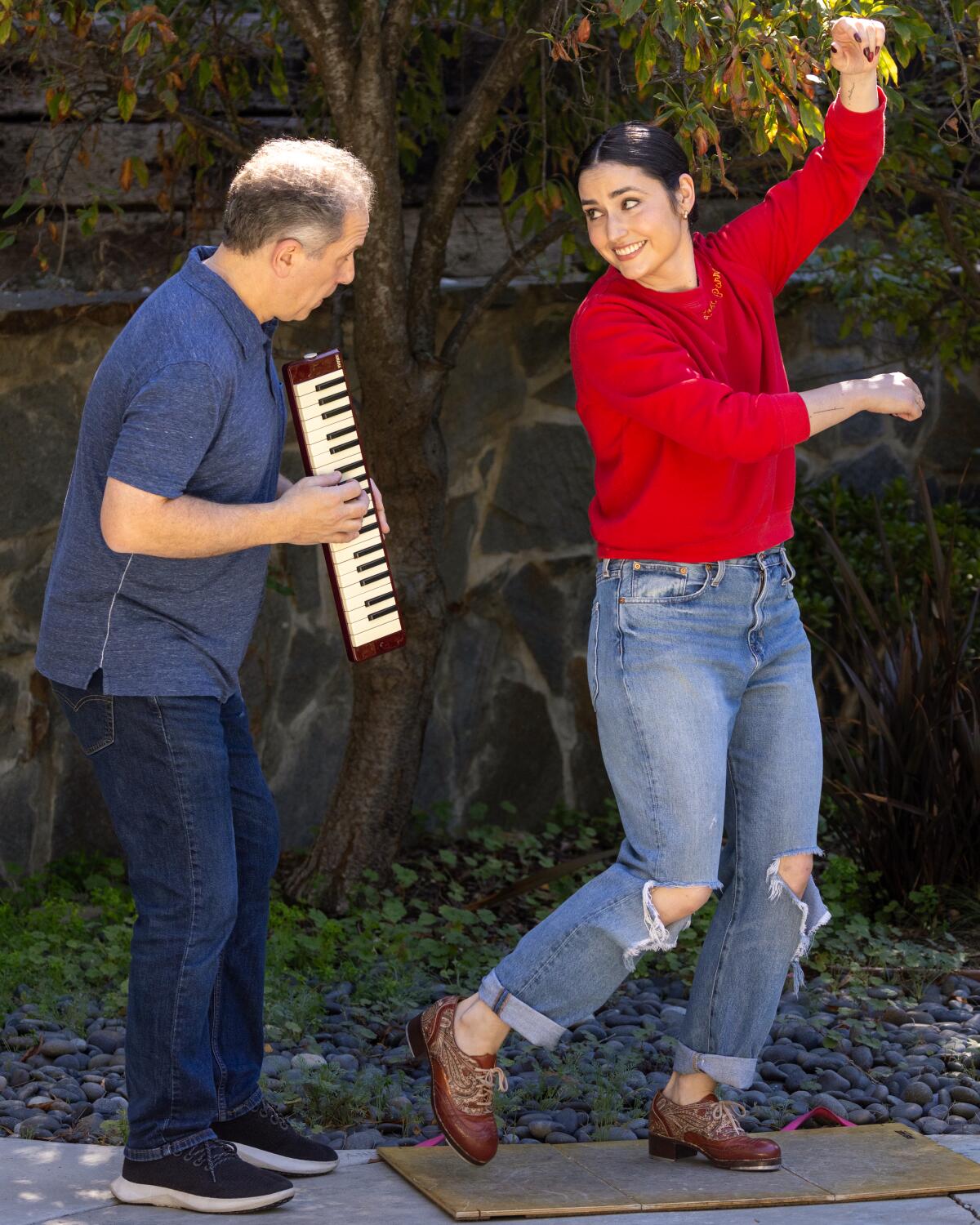
Each completely in their element and unafraid to stick with a single idea for as long as it needs to mature, the two play off each other’s unique style, while adding texture and color to one another’s interpretations. “I feel so safe to be free with Larry because his time is undeniable and obviously his melodic choices are so inspiring,” says Sullivan. “I feel like my dancing has really changed so much since working with him.”
“I haven’t played with any dancers who are more like a jazz musician and a drummer than a dancer,” Goldings adds. “Although Melinda can choreograph and work things out, she is also a great improviser, and listener, and she knows tunes. Melinda has all the skills of a great jazz instrumentalist. Like a jazz musician would say ‘hey let’s play this tune,’ and she just goes with the flow and listens like a jazz musician.”
Tap dancers are no strangers to the jazz world. In fact, the two art forms developed alongside each other and have each been crucial to the other’s evolution over the last century.
As tap dancing became more rhythmic in the 1920s, jazz drummers took note: When “Shuffle Along” premiered on Broadway in 1921, the two genres collided completely, offering Americans an explosion of swinging, syncopated rhythms, alongside a repertoire of Black vernacular movement. Throughout the 1920s and 1930s, famous nightclubs like Harlem’s Smalls Paradise and the Cotton Club, and L.A.’s Sebastian’s Cotton Club, put on musical revues featuring both the best in jazz music and jazz tap dancing. Tap dancers were regularly improvising to jazz music, creating routines and choruses that followed the musical structures of jazz.
As the tempos in jazz music spiked, so too did the speed of tap dancing. Over the years many factors have interrupted this relationship, but the two forms have continued to move in sync.
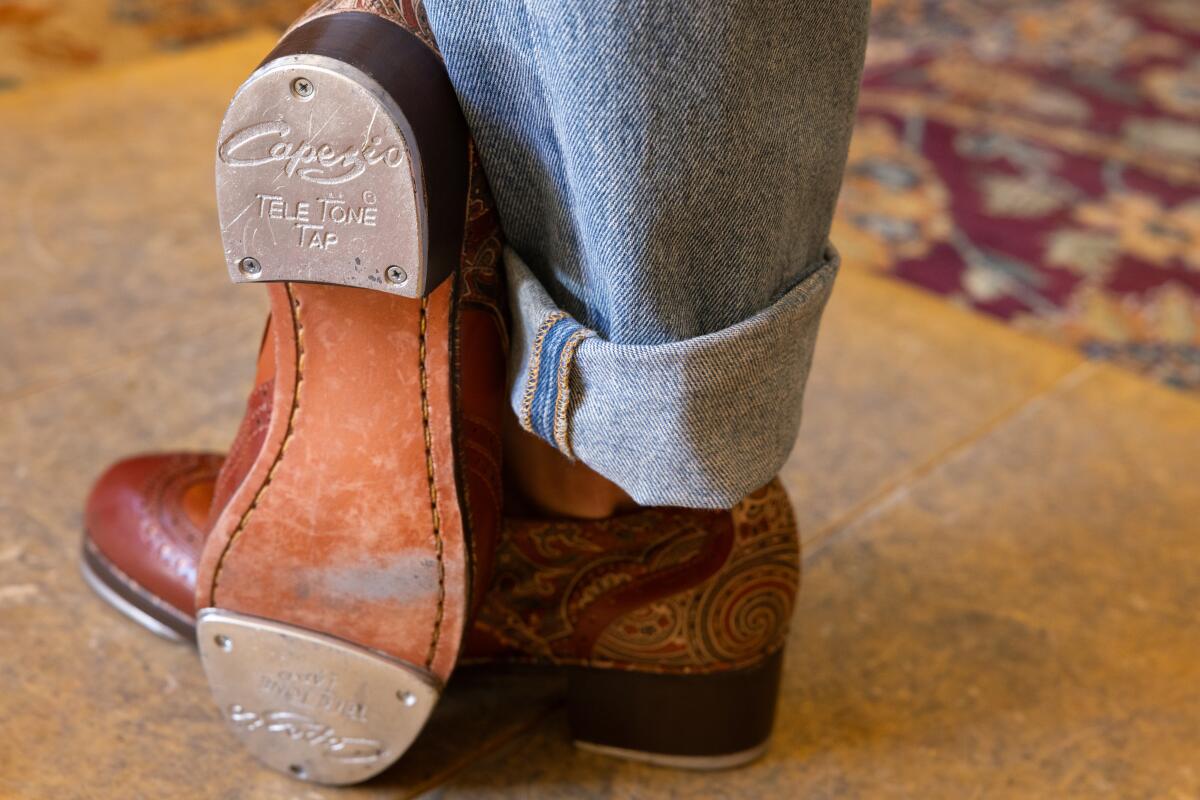
In the 1980s, this relationship between jazz music and tap dance began resurfacing in public ways across New York and Los Angeles. Films like “The Cotton Club” (1984) helped bring visibility to the inherent synergy of jazz and tap. In L.A., Lynn Dally’s Jazz Tap Ensemble sought to bring original tap choreography and live jazz to the concert stage. Performers like Gregory Hines and jazz clubs like Culver City’s Jazz Bakery were also key in reestablishing this relationship on the West Coast. Since the early 2000s, however, this collaboration has gone more underground; Goldings and Sullivan’s platform marks a resurgence in its public visibility.
Sometimes the duo plays songs Goldings has written. Other times, some of the tunes they use are based on groove ideas one of them brings to practice. Goldings will often play a synthesizer bass and piano, which allows him to instantly arrange, though he also favors the convenience of the melodica and pocket piano. Meanwhile, Sullivan brings her portable board and tap shoes, which allow her to dance anywhere.
Their ears are open, but they have found a particularly sweet niche in the American songbook and classic drum feature songs like “Billy Boy,” where Goldings supports Sullivan’s solo improvisation by playing just the chords and rhythms — a dynamic known as comping in jazz circles. Goldings’ incisive accompaniment provides rhythmic grist for Sullivan as she gives her wooden board a run for its money.
Jazz journalist Allen Morrison has been following Goldings for over a decade and came across this collaboration while reviewing some of Goldings’ solo work. “I could watch and listen to them all day,” he says. “I’ve watched their ‘Billy Boy’ at least a dozen times — it’s two minutes of pure bliss.” He explains that part of what makes this jazz duo so remarkable is that the two of them are like a new kind of jazz piano trio: Goldings’ covers piano and bass while Sullivan’s tap dancing becomes a third hand.
The pair are taking their music on the road this winter, with stops at the Museum of Musical Instruments in Scottsdale, Ariz., and Freight and Salvage in Berkeley this December. Also in the works is an album they are recording for an experimental label, Colorfield Records, set for a 2024 release.
Pete Min and Todd Dahlhoff, who run the L.A.-based record label, like to push the envelope sonically. Since the sound of tap shoes can be overbearing, they approach it instead with an emphasis on texture. Sullivan has played around with socks and bare feet, sand and gravel—whatever will make interesting sonic cushions. Then Min messes around with it, seeing what structures can be carved out of these recorded texture experiments. It becomes a sonic collage.
Goldings explains that recording this album has really made them think about how they can bring some of this experimentation into their live performances, which he thinks is possible with all the gadgets today and the ability to record and sample something in the moment. Not that the gadgets are necessary. At this summer’s performance at the Teragram Ballroom, Sullivan’s two feet and tap board thrummed along with Goldings’ Hammond B3 organ and extremities. He plays the melodic stuff on the top keyboard with one hand, the chords on the bottom keyboard with his other hand, and the bass notes with his feet on the pedals, their sound is distinctly layered.
Hussain Jiffry, artistic director of Vibrato Grill Jazz, says he has been a fan of Goldings for many years but hadn’t seen this show prior to booking the two. After having Goldings and Sullivan play Vibrato last month, along with bassist David Piltch and singer India Carney, Jiffry says he cannot wait to have them back soon.
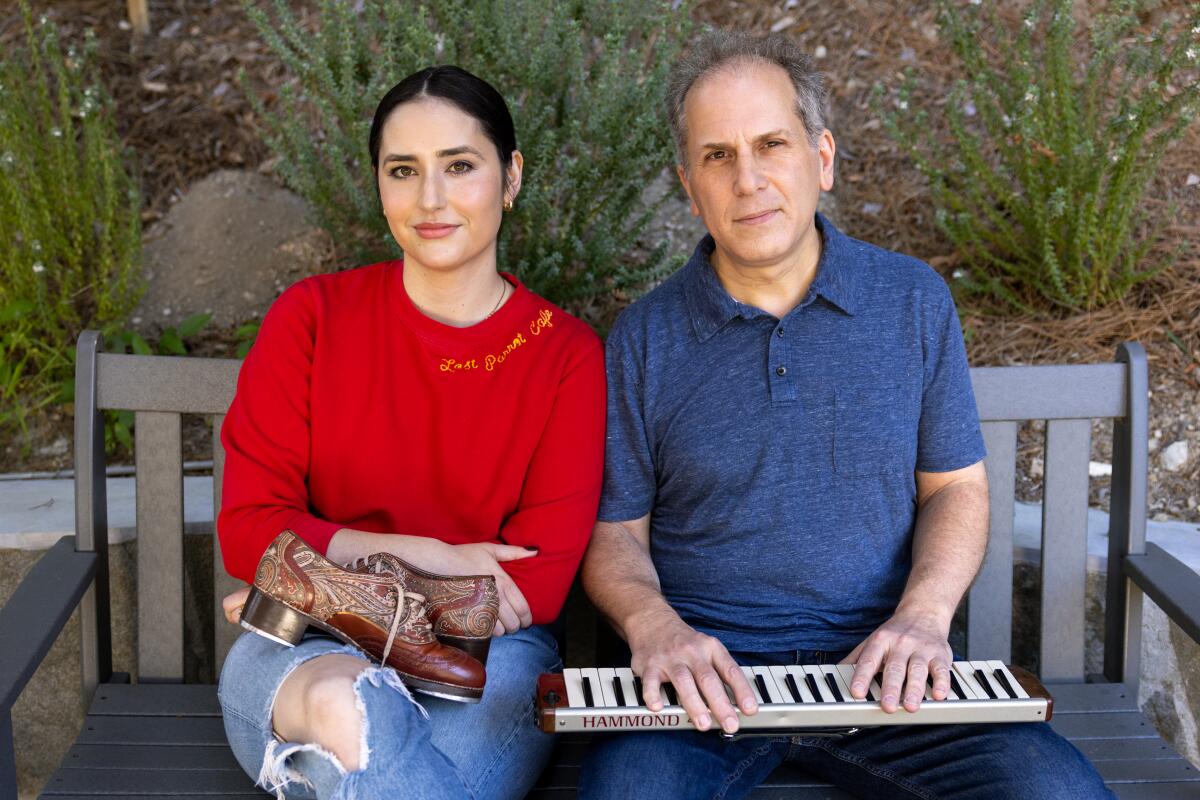
Even though they both wish L.A. geography were more conducive to a more cohesive jazz “scene,” Goldings and Sullivan are finding workarounds, playing in a diverse array of venues — the Troubadour and ETA, among others — and hoping to branch out even more in the coming months. “We’re just going to get creative,” Sullivan says, adding: “We’d love to even open for a comedian.”
While Goldings and Sullivan are constantly uploading their duets and performance footage, their Patreon — comprised mostly of fans who want to find a way to support the artists as well as aspiring and professional musicians/dancers who want to both support and learn from Goldings and Sullivan — includes a more intimate look at their process and exclusive (subscriber only) videos. Five dollars a month gets subscribers one video of Goldings and Sullivan in duet and one grab bag, which could be as wildly entertaining as the two creating a tune and dance on the spot by pulling a word out of a hat or Sullivan teaching a tap step (which includes the possibility of Goldings dancing for the camera), inviting fans into the duo’s playful dynamic.
Crucially, the Patreon forces them to practice. So when they get together now, they play. Sullivan will receive a voice memo from Goldings, perhaps a groove, a sampling of instruments that go from 4/4 to 5/4. The two then quickly record a completely spontaneous jam in Goldings’ home studio. “We have so much fun playing duo, it’s ridiculous,” Goldings adds with a big grin.
Brynn Shiovitz is a freelance writer based in Los Angeles and the author of “Behind the Screen: Tap Dance, Race, and Invisibility During Hollywood’s Golden Age” (Oxford 2023).
Sign up for The Wild
We’ll help you find the best places to hike, bike and run, as well as the perfect silent spots for meditation and yoga.
You may occasionally receive promotional content from the Los Angeles Times.